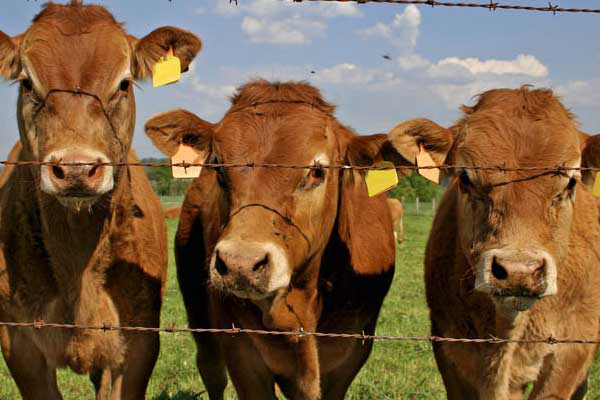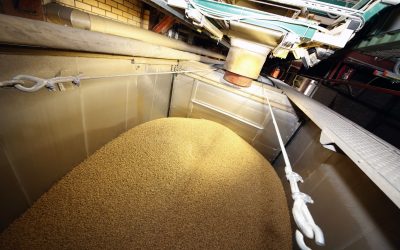Choline – An essential nutrient for transition dairy cows

Since the earliest research on Choline, scientists have known it to be a required nutrient for many monogastric animals. Although the scientific community does not yet recognize choline as a required nutrient for ruminants, a review of the literature provides mounting evidence that it is.
How do you define “essential” in your dairy diets?
An essential nutrient is one required for normal body functioning that either cannot be synthesized by the body at all, or cannot be synthesized in amounts adequate for good health, and thus must be obtained from a dietary source.
According to the NRC (2001), “The establishment of a choline requirement, either for lactating dairy cow, or a transition cow in the late dry period and in early lactation, will require more extensive feeding experiments than available at the time of this publication.” Since the publication of the last NRC, there have been numerous studies conducted to examine the effects of feeding ruminally protected choline to dairy cows, particularly those transitioning from the dry period to early lactation. Therefore, it is now appropriate to evaluate whether choline should be considered a required nutrient in dairy diets.
The first piece of evidence that choline is a required nutrient is that transition cows develop fatty liver, a classic choline deficiency symptom, during the periparturient period (Grummer, 1993). Several studies have shown 50 to 60% of transition cows experience moderate to severe fatty liver (Bobe et al., 2004). These studies have been conducted in numerous countries across different genetic lines of cattle and varying management systems and the data do not represent problem cows or herds. The consistency amongst these studies suggests that development of fatty liver is a “normal” part of the cow’s biology.
Because fatty liver is a classic deficiency symptom for choline, it is reasonable to question if transition cows are typically deficient in choline.
At calving, hormonal changes trigger an intense period of lipid mobilization from adipose tissue and as a result, blood nonesterified fatty acid (NEFA) concentrations typically increase 5- to 10-fold (Grummer, 1993). NEFA concentration and blood flow to the liver are the two biggest factors affecting how much NEFA is taken up by the liver. The most desirable fate of fatty acids entering the liver would be complete oxidation to provide energy to the liver or reesterification and export as triglyceride from the liver as part of a very low density lipoprotein (VLDL). Increases in oxidation occur during the transition period because the liver becomes metabolically more active, but the increases are not sufficient to cope with the increased load of fatty acid being presented to the liver. Research conducted nearly 25 years ago revealed that ruminants have a low capacity to export fat from the liver as VLDL as compared to nonruminants. This and the inability to markedly increase fatty acid oxidation is why transition dairy cattle develop fatty liver when experiencing elevated blood NEFA.
It is now apparent that choline deficiency is the limiting factor for VLDL export from the liver. It has been shown in many species, using a wide variety of experimental approaches, that rate of VLDL export is highly related to the rate of phosphatidylcholine synthesis (Cole et. al., 2011). Hence when animals are deficient in choline they are prone to fatty livers.
The reduction in liver fat content when feeding transition cows rumen-protected choline is accompanied by improved health and production. Lima et al. (2011) observed reduced incidences of clinical ketosis, mastitis, and morbidity when feeding rumen-protected choline from 25 days prepartum to 80 days postpartum. It has been known for years that elevated fat in the liver is associated with poor reproductive performance (Bobe et al., 2004). First service conception rate was increased by feeding rumen-protected choline in two studies (Oelrichs et al., 2004; Lima et al., 2007) although the difference was not statistically significant in one of them. A recent meta-analysis of 13 studies in which rumen-protected choline was fed to transition cows revealed a significant increase of 4.9 lb milk/day and 1.6 lb of dry matter intake/day (Figure 1; Grummer and Crump, unpublished). These data show that alleviating a choline deficiency not only reduces liver fat but also improves parameters that are economically important to dairy producers.
It is important to understand that the dramatic increase in NEFA uptake by the liver is part of the normal biology of “all” transition cows and is not restricted to fat cows, poorly fed cows, or cows housed in suboptimal environments. All cows, especially high producing cows, experience elevated blood NEFA level and fat accumulation in the liver and are more susceptible to numerous metabolic problems due dietary deficiencies in choline.
To learn more about the choline requirement and for the complete proceedings from the Cornell Nutrition Conference presentation, see pdf attached.











